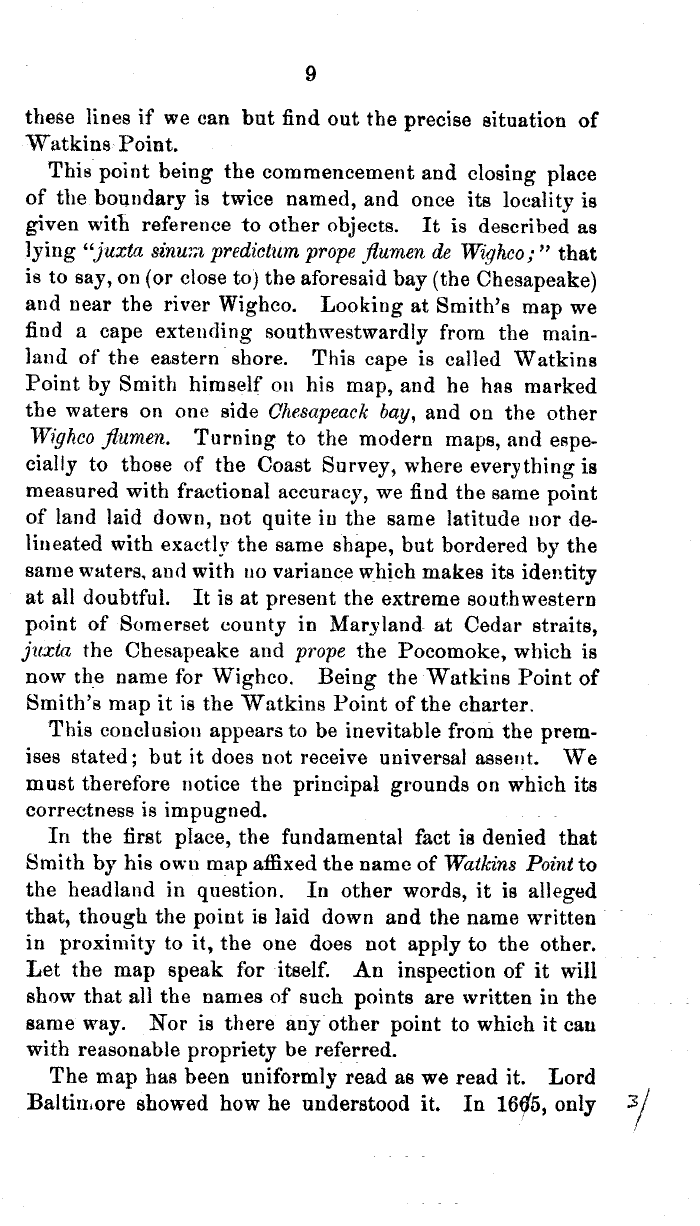| 9
these lines if we can but find out the precise situation of
Watkins Point.
This point being the commencement and closing place
of the boundary is twice named, and once its locality is
given with reference to other objects. It is described as
lying t1juxta sinw,a predictum prope flumen de Wighco; " that
is to say, on (or close to) the aforesaid bay (the Chesapeake)
and near the river Wighco. Looking at Smith's map we
find a cape extending southwestwardly from the main-
land of the eastern shore. This cape is called Watkins
Point by Smith himself on his map, and he has marked
the waters on one side Chesapeack bay, and on the other
Wighco flumen. Turning to the modern maps, and espe-
cially to those of the Coast Survey, where everything is
measured with fractional accuracy, we find the same point
of land laid down, not quite in the same latitude nor de-
lineated with exactly the same shape, but bordered by the
same waters, and with Do variance which makes its identity
at all doubtful. It is at present the extreme southwestern
point of Somerset county in Maryland- at Cedar straits,
juxta the Chesapeake and prope the Pocomoke, which is
now the name for Wighco. Being the Watkins Point of
Smith's map it is the Watkins Point of the charter.
This conclusion appears to be inevitable from the prem-
ises stated; but it does not receive universal assent. We
must therefore notice the principal grounds on which its
correctness is impugned.
In the first place, the fundamental fact is denied that
Smith by his own map affixed the name of Watkins Point to
the headland in question. In other words, it is alleged
that, though the point is laid down and the name written
in proximity to it, the one does not apply to the other.
Let the map speak for itself. An inspection of it will
show that all the names of such points are written in the
same way. Nor is there any other point to which it can
with reasonable propriety be referred.
The map has been uniformly read as we read it. Lord
Baltimore showed how he understood it. In 1685, only
|

